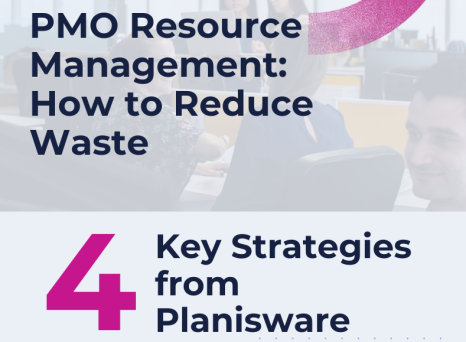Resource management is the practice of planning and scheduling resources. And, as we know, it’s difficult. There’s no easy fix, but breaking it down can help. To do this, we need to understand the core components of resource management.
Resource management is the practice of planning and scheduling resources. And, as we know, it’s difficult. There’s no easy fix, but breaking it down can help. To do this, we need to understand the core components of resource management.
Resource management involves determining capacity, developing the resources to match it, as well as allocating current resources.
- Capacity planning is the process of determining the capacity your organization needs for future projects and objectives. This is a long-term, strategic view, not looking at specific people or materials. Rather, it’s about what demand the organization will have and if there aren’t enough resources, or indeed too many.
- Resource allocation is the process of selecting and assigning resources to meet the requirements of immediate projects in the short-term and get them done. It involves identifying bottlenecks and dependencies that could impact the project. It also determines when you’re under-utilizing resources.
What Do We Mean by ‘Resource’?
It’s important to note that resources are not only people and skills. It refers to all resources a project needs, such as materials and factories. Everything is a resource (except for money).
All of these resources can suffer from disruption. This can be due to shortages in resources, or geopolitical tensions restricting access to resources, and stretching those available beyond their capacity.
Furthermore, organizations might call for new skill sets they have not needed before. Consider data roles as an example. Ten years ago, most companies didn't have data analyst roles. Now, they are a very sought after resource. As such, companies may have difficulty filling roles that are in high demand with not enough resources available for hire.
Capacity Planning: A Strategic Task
Capacity planning is the process of determining what resources an organization needs to successfully complete the projects or activities required to reach the company's long-term business objectives, and ensuring that these resources are available when they are needed (but not idly sitting around the rest of the time).
To do this, most companies will start by establishing a prioritized list of projects over the medium- and long-term, build estimates of the resources needed (both human and materials / components), then determine whether the organization has the resources to meet these demands. If the people in charge of managing resources identify a gap (whether it be not enough resources or too many), they will raise the issue with decision-makers, who can then make provisions.
Provisions can take many forms. For human resources, this can include upskilling existing employees, hiring people with the missing set of skills, outsourcing part of the project, or taking on contract workforce. For materials and components, it can include diversifying suppliers to increase capacity, launch a cooperation project with an external organization, or even rethink a product to exclude a component that will be difficult to obtain (semiconductors are the most obvious example).
The benefits of successful capacity planning include:
- Better quality forecasting. Companies that are aware of their capabilities know if they can say yes to ambitious projects and deliver quality outcomes on time.
- No skills gaps. Identifying skills or combinations of skills for each project ahead of time enables more fluid project management. This can mean the hiring of new team members or training existing staff.
- No shortages of materials. Identifying the raw or specialized materials you need will allow you to source suppliers, taking into account costs and lead time. You should also consider shipping routes, as geopolitical tensions can make offshore facilities difficult to access.
- Reduced overcapacity. It's not just shortages that are problematic: overcapacity, whether it be in people with a specific (maybe outdated) skillset or in materials can be just as much of a drag. Anticipating needs, even at a very high level, gives you time to adapt your resources to your upcoming projects.
- Efficiently staffed production cycles. Planning ahead means you can allocate the right human resources to meet demand, so no one senior works on a task a junior can complete (and vice versa!).
Resource Allocation: An Operations-Focused Task
Resource allocation is the process of selecting and assigning resources to meet the requirements of projects. It is more of a short to medium term activity. Project or resource planners with an understanding of resources’ capabilities will identify who is suitable for specific tasks within a project.
Resource planners have three key nemeses:
- Poor quality forecasts: whether they are inaccurate, unreliable, outdated and/or a pain to consolidate, poor quality forecasts are the source of a lot of resource allocation woes because the resource planner has no clear view on the resource's upcoming workload or the project needs.
- Resource bottlenecks: whenever there is too much need for a given resource at a given moment in time.
- Resource shortages: a system lack of a specific resource that cannot be worked around (most often because everybody (including the company's third party partners) has the same shortage. For example, in recent news: highly skilled developers or semiconductors)
To help with resource allocation, the people who manage resources may have access to tools that include:
- Resource availability trackers, that show what skillsets or third-party resources they have to hand, along with their current allocation and capacity.
- Bottleneck analyses, which identify potential bottlenecks and allow to drill down into the source of the issue. Some tools might propose solutions to solve the bottleneck.
- "Workload by project" trackers, that list all the projects in a given set, and their respective (and cumulated) resource consumption
- Timeshift tools, which allows resource allocators to run simulations of what would happen if a project or activity were delayed or started earlier.
Not all resources on a project or an activity will be subject to resource allocation. Often it is the need for a specific skill or resource that will trigger the allocation process.
Successful resource allocation can help you to:
- Better orchestrate human resources across parallel projects. Knowing which projects are a priority will enable you to direct which tasks people should complete first.
- Reduce project bottlenecks and improve efficiency. Allocating the right resources to the right projects at the right time means hand-offs between tasks should be seamless. And workflows should… well… flow.
- Minimize wastage. Highly-skilled human resources usually cost more, and so will increase the project cost. Meanwhile, team members who don’t have the right skills to meet project demands will cause delays. And securing production facilities before you’re ready to use them will elevate costs, as will purchasing materials that require specialized storage long before you need them.
- Improve financials. Fewer bottlenecks and minimal wastage mean it will be easier to stay within the project budget.
- Reduce instances of burnout. Knowing who has the skills for specific tasks means you won’t overstretch resources. This will enable them to manage their workloads and timelines, without undue stress.
- Improve employee engagement. Highly-qualified resources doing repetitive tasks will feel unchallenged. Make sure everyone is working on tasks that showcase their potential. This will make for happier, more engaged employees—and happy workers are more likely to stay for longer.
Why Resource Allocation and Capacity Planning Work Together
Many organizations work with limited amounts of the right resources. Good capacity planning identifies resource shortages ahead of time, so you can tackle them efficiently. This allows you to take on projects that will have a positive impact on your business, even if you don’t currently have the resources in place. And, in the meantime, you can prioritize projects you do have the resources for.
This capacity planning will inform your resource allocation needs. It’ll identify the number of people, skills, physical resources, and hours you’ll need to complete a project.
With accurate visibility of your demands and an aligned approach to capacity planning and resource allocation, you can:
- Make better HR decisions. Knowing exactly what resources you have, and the ones you need, will mean you can better optimize your workforce. This may involve escalating recruitment needs or reskilling your people.
- Deliver projects faster. With the right scope of resources available, projects won’t need to stop and start.
- Improve your agility. Visibility into your resources and scheduled resource planning will help you better handle disruptions in your industry, by giving you the data you need to make your decisions.
- Predict project outcomes. If you know what resources you have available, you can better predict the outcome of projects. You can also gauge timeframes more effectively, and allocate the right number of resources to ensure the projects you deliver are of high quality.
- Prevent committing to too many projects. When you understand your resource restrictions, you won’t overestimate your output. Instead, you will only take on the projects you have capacity for.
- Increase capacity. If you know what materials a supplier will deliver in a set amount of time, you can increase your capacity by agreeing to buy a percentage of their output in advance, then adding the necessary resources to produce the items.
- Align execution with strategy. By knowing your capacity you understand what you need to build to take on critical strategic projects. This helps you achieve business goals and steer your company in the best direction.


